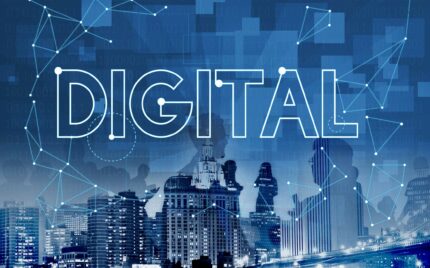
HR Analytics: The trend of the recruitment approach to the data-driven world (Part 1)
6 yearsago 0 Comments 1.9k Views
The question “what is HR analytics?” is asked by a lot of HR professionals who want to get started with people analytics. The Human Resource (HR) department may have the least popular reputation for bringing in the big bucks or playing a numbers game like sales. HR also struggles to quantify and measure its success, as marketing and finance do.
But HR analytics changes all of this. A lot of the challenges we just described can be resolved by becoming more data-driven and analytical savvy. In this post, we will explain what HR analytics is and how it will shape businesses in the future.
What is HR analytics?
Human Resource analytics is a data-driven approach to managing people at work. HR analytics, also known as people analytics, workforce analytics, or talent analytics, revolves around analyzing people problems using data to answer critical questions about your organization.
Example questions include:
- How high is your annual employee turnover?
- How much of your employee turnover consists of regretted loss?
- Do you know which employees will be the most likely to leave your company within a year?
These questions can only be answered by using data. Most HR professionals can easily answer the first question. However, answering the second and the third question is harder because you would need even more data and extensively analyze it as well.
HR departments have a tradition of collecting vast amounts of HR data. Unfortunately, this data often remains unused. As soon as organizations start to analyze their people’s problems by using this data, they are engaged in HR analytics.
How HR analytics helps Human Resource Management
Literally, HR analytics is a data-driven approach toward Human Resources Management. By using people analytics, you don’t have to rely on gut feeling anymore. If you’re a bit hesitant about jumping into the scary world of recruitment analytics, then you may be interested in hearing some of the companies who are actively embracing these tactics. Names like Google, Cisco, Sprint, and Deloitte all use recruitment analytics to drive their decision making and hiring processes and do so with industry-leading success.
That’s because the benefits of analytics in recruitment over traditional hiring are endless. Here are just some:
- It provides objective visibility into the effectiveness and value of your recruitment activities.
- It helps keep track of high-potential candidates, allowing you to actively nurture possible future hires.
- It lets you create a robust talent pool or a permanent record of all candidates or hires that you can consistently come back to.
- It unlocks the potential to learn from and improve processes.
- It enables proactive recruitment (rather than reactive recruitment) to drive better and more timely hiring decisions.
- It lets you predict which candidates will be high performers, and which ones may be bad hires.
What is predictive analytics in recruitment?
Simply put, predictive analytics in recruitment is the process of using historical data to make predictions about future hiring activities and candidates. It’s all about collecting and analyzing data using statistics, machine learning, and modeling techniques to best predict what could happen under specific scenarios.
Take an Auto Shortlist, for example. The Auto Shortlist is considered as a comprehensive hiring solution to approach top executives with a minimum monthly offer from $2000. This 1-step advanced technology was built by PRIMUS, a service from Navigos Group (famous for VietnamWorks and Navigos Search). PRIMUS will gather various inputs about given candidates from its valuable database and using predictive modeling – the basics of which to analyze these inputs to determine if that candidate will be a suitable fit for a job or not. Then it will send employers a list of matching profiles selected according to the requirements of each position within 3 working days. Moreover, recruiters can view the level of candidates’ interest with vacancies which is evaluated by PRIMUS’s machine learning algorithm and track the readiness status, thereby accessing their active rate for new positions.
This same principle can be applied to broader recruitment activities as well, resulting in:
- Hiring process quality enhancements
- Intelligent and efficient sourcing
- Faster and more targeted hiring
This differs from traditional hiring techniques in one fundamental way. It allows for almost absolute objectivity in your decision-making, rather than a more traditional “going with the gut” approach. By basing hiring decisions primarily on data and algorithm-based predictions, recruiters can remove their own biases from the process, which in turn can yield more consistent and better results.
——————–
How do you think about this article? Please share it with us via the comment section below.
>>> Continue reading Part 2 which provides 8 questions that predictive analytics to get insights into the recruitment.
According to AIHR + Recruitee
PRIMUS – FIRST CLASS JOBS ONLY





